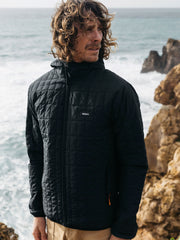The story of Grace Darling could be told in more detail than we have here. It certainly deserves it, considering the bravery that was shown. What we find most inspiring though was what happened afterwards. The story took on a life of its own, spreading even to Queen Victoria herself, yet Grace was never comfortable with her fame. She retreated from society, back to her home at Longstone, and to her dying day refused to see what she had done as heroic. She was a simple lighthouse girl who had done her duty, like any good person would.
The combination of her bravery and humility captured the Victorian sensibilities of the age. She and her father were awarded the Silver Medal for bravery, Grace being the first woman to ever receive such an award, and her actions in large part galvanised support for the institution we now know as the RNLI. She remains a guiding inspiration for modern lifeboat volunteers to this day, her bravery often cited as a motivation.
Modern Lifeboat crews still have to compete with the treacherous seas that surround our islands. Today’s crews are well equipped for the job, with state-of-the-art technology and the most rigorous training available, but the spirit of Grace Darling endures. The vast majority of Lifeboat stations are manned by volunteer crews; ordinary men and women who want nothing more than to save lives at sea. They don’t do it for glory, or praise. They do it for the same reason as Grace did. Because someone has to.
If a young girl of 22 could do what she did – with no radio, no life jackets, no sonar, no weather forecasts and putting out in an open topped boat with no engine – what’s stopping you?
*
The RNLI runs 238 Lifeboat stations around the UK’s coastal waters, mostly manned by volunteers. 95% of the funding for Lifeboat stations comes in the form of donations from the public. More information on donating to or volunteering for the RNLI can be found on their website.
















































































